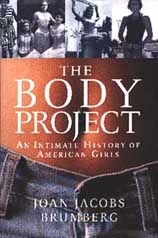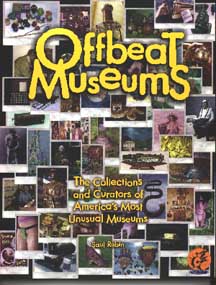


NEXT EARLIER NEWS |news | first page | contact the museum | art
of menstruation | artists (non-menstrual)
| belts | bidets | Bly, Nellie | MUM board
| books (and reviews)
| cats | company booklets
directory | costumes | cups
| cup usage | dispensers
| douches, pain, sprays | essay
directory | extraction | famous
people | FAQ | humor
| huts | links | media | miscellaneous |
museum future | Norwegian
menstruation exhibit | odor | pad
directory | patent medicine | poetry
directory | products, current | religion | menstrual products safety
| science | shame | sponges | synchrony | tampon directory | early tampons
| teen ads directory | tour
(video) | underpants
directory | videos, films directory | washable pads | LIST
OF ALL TOPICS
 "My hopes for the future rest upon the girls."
"My hopes for the future rest upon the girls."
So wrote the physician Dioclesian Lewis, in 1871, in his book Our Girls, in an effort to redirect girls from "idle
pursuits" to something worthy in Victorian America. The book was popular,
but few value its ideas today.
One who does is feminist Joan Jacobs Brumberg, and she argues the point
convincingly in her recent book The Body Project (Random
House, $25), which everybody should read both for the arguments and for
the social history.
Advertising screams the values of popular culture today, pushing easy
sex, hard bodies and beautiful skin, rather than promoting good works and
character, as Brumberg says Victorian mothers did for their daughters. Few
girls measure up, making them unhappy and vulnerable to manufacturers and
men.
(But how could our retailers make money if were easy to be beautiful
and sexy?)
It's astounding to read the role of mirrors, germ theory and tampons
in the decline of virginity and the increase of vanity in American culture.
The author proposes again protecting girls and young women from the
worst of our culture, and promoting worthwhile goals, as was done a hundred
years ago, often by single-sex associations.
Three years ago, when I opened this museum, an unidentified person from
Dr. Brumberg's office at Cornell, where she holds a Stephen H. Weiss Professorship,
sent me her article "Something Happens to Girls: Menarche and the Emergence
of the Modern American Hygienic Imperative" (Journal of the History
of Sexuality, 1993, vol. 4, no. 1). The article is an illuminating discussion
of the medicalization of menstruation from about 1800 to the present in
America. Much of the same story forms part of her argument in this book.
And her argument has helped convince me that this museum, MUM, should
have no connection with a medical museum or with a medical institution.
Such a connection would just harden the link between sickness and menstruation
in the public mind.
I do have a quibble with her tampon discussion in the "The Disappearance
of Virginity" chapter. She writes that Dr. Earle Haas invented the
commercial tampon. Haas invented the tampon with
an applicator. American women could buy Wix tampons in 1934 through
the Sears, Roebuck catalog, and probably buy fax tampons, and maybe
others, before 1936, when Dr. Haas's invention, Tampax, appeared. Haas did
patent his tampon a month before the Wix patent
was granted, however, but didn't beat Wix to the marketplace. Neither Wix
nor fax had applicators; that was the genius of Tampax.
Read it! You will understand today's world a lot better.
Just an afterthought: What is it about bellybuttons?
One pops up on The Body Project cover (above), and a similar view graces
the ad for the Canadian TV video Under Wraps.
Is it to show kinda where the uterus and ovaries are? Or is this the sexualized
advertising Professor Brumberg complains about?
 Let's Be Thankful
for the Unusual, When the
Usual Can be So Awful
Let's Be Thankful
for the Unusual, When the
Usual Can be So Awful
OK, you're looking right now at the Web site for a pretty unusual museum
- but there are other "different" ones, too, and I have just the
thing to tell you something about them!
Santa Monica Press in California has just published a big book, Offbeat
Museums, about 50 museums in America, including the famous Mütter Museum
in Philadelphia, a medical museum run by the College of Physicians in that
city (by the way, compare this museum's nickname MUM with Mütter, which
in German means "mothers"); the eerie Museum of Jurassic Technology;
and the National Museum of Dentistry. But the reader can also feast on the
International Banana Club and Museum, Mister Ed's Elephant Museum, The Museum
of Death, and the Madison Museum of Bathroom Tissue.
And, of course, this museum, MUM. The six pages of this entry look great
(I do graphics for a living), as do the rest of the entries, with plenty
of pictures and wry commentary (menstruation brings that out in people).
I recommend it! This is the third popular book that has discussed
MUM.
Buy it from the publisher, Santa Monica Press, in Santa Monica, California,
at 1-800-784-9553, for $17.95, plus $3 shipping. Or write Santa Monica Press,
P.O. Box 1076, Dept. 4646, Santa Monica, CA 90406, USA. Tell 'em your MUM
sent you!
Remember to See the Feminine
Hygiene Comedy Group in New York Every Thursday!
Get all the facts and/or
call the Fried Eggs Hotline at 212-475-1284*1 for more information about
the all-feminine crew!
© 1998 Harry Finley. It is illegal to
reproduce or distribute any of the work on this Web site in any manner or
medium without written permission of the author. Please report suspected
violations to hfinley@mum.org




![]()
 "My hopes for the future rest upon the girls."
"My hopes for the future rest upon the girls." Let's Be Thankful
for the Unusual, When the
Usual Can be So Awful
Let's Be Thankful
for the Unusual, When the
Usual Can be So Awful